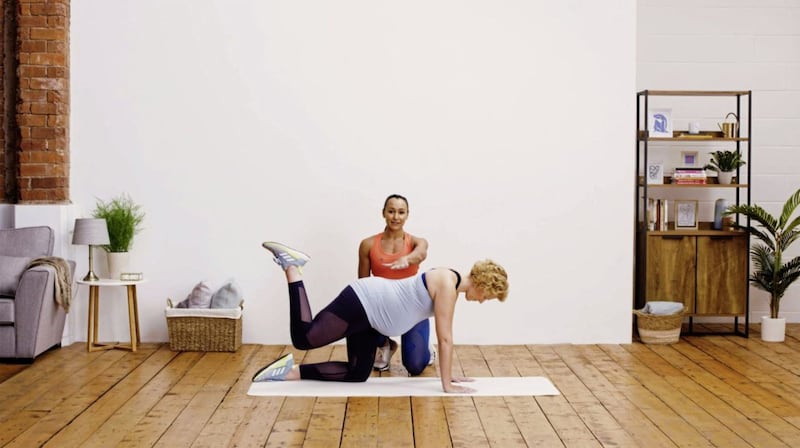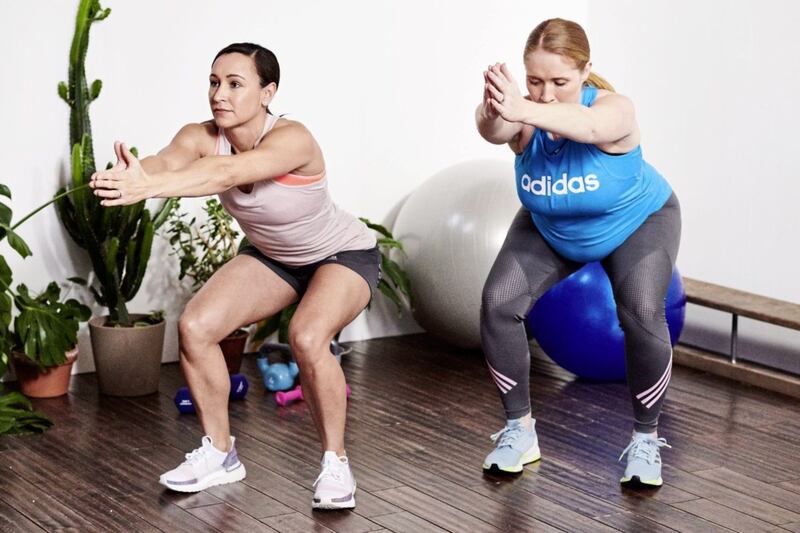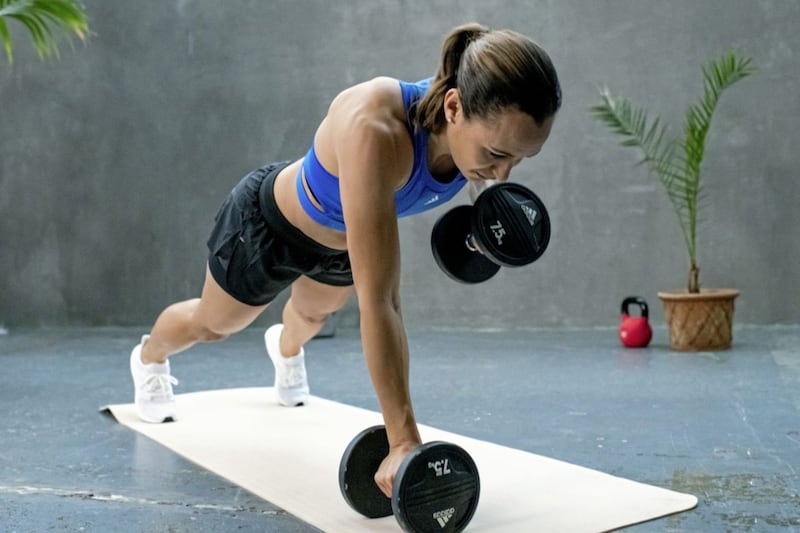THERE aren't many women more qualified to talk about keeping fit while pregnant and exercising after having a baby than Dame Jessica Ennis-Hill.
One of Great Britain's all-time sporting heroes, she took Olympic gold in the gruelling heptathlon in London 2012 and returned to win at the Beijing World Championships – just 15 months after giving birth to her first child.
It was an astonishing comeback and a true inspiration, whatever your career or fitness goals after having a baby.
The 33-year-old is now a mum-of-two to Reggie (5) and Olivia (2) and, as you might expect, she exercised throughout both pregnancies. So she's on a mission to take the confusion out of prenatal fitness.

"There are so many misconceptions," she says.
"There's still a lot of stigma attached to it. Even when I was exercising when I was pregnant with Reggie, I had people saying, 'Should you really be running?'"
There's a lot of fear, understandably. "You're stepping into an unknown world for the first time and it's that worry that you don't want to do anything to harm your child," Ennis-Hill says.
"Most women think, 'I'm not even going to risk it'. You never want to push yourself through pain barriers but you can exercise where you feel your heart rate getting up."

Muscles to work in pregnancy
"Pelvic floor, that's a really key area," she says, "and quad muscles; it's important to make sure they're stretched out so they don't become tight and your pelvis sits in a different way, and then your bum is in a different position and that creates problems for your back.
"A lot of women suffer back problems throughout their pregnancy and years after, so make sure you keep this area strong, so you can support your baby.
"Glutes; when you're pregnant your weight shifts and I found that my glutes were just switching off – and you get that flat bum where everything's forgotten how to work!
"Upper body, as well. You forget when your baby arrives you're going to be so physical – I feel like I've strained by bicep from carrying Liv around!"
The type of exercise to do
Most aerobic exercise, such as running (if you've run before), stationary bike, yoga and swimming, is generally recommended. However the NHS advises that activities like skiing, cycling and horse riding might cause a fall which can be a risk to the baby.
Body-weight home workouts, like those on Ennis-Hill's own app Jennis – which has loads of short, safe at-home workouts for all stages of pregnancy (and postnatal) – can help target specific muscles.
"A really simple exercise, that's getting you to engage your core, is you're on all fours just lifting your hands [one at a time]. You can do it all the way through your pregnancy."
Or, "With your hands on the floor, lift each knee up, and that's activating your core in a different way. I found those two exercises really helpful during pregnancy, and postnatally."
She recommends uses a TheraBand (a resistance band) too: "Standing and activating your glute by taking your leg out to the side, or lying on the floor on your side and doing clams."
Safety issues to bear in mind
No mums-to-be, even Olympians, can blindly carry on their fitness routine as normal. Finding out you're going to have a baby is not the time to start a gruelling regime if you didn't exercise before, but it's relative to what you did in the lead up to your pregnancy.
"If you were an Olympic weightlifter and you could lift 100kg, and you were then lifting 20 kg [when pregnant] that's fine for you, but it wouldn't be fine for the average person," says Ennis-Hill, who herself ran once or twice a week ("obviously, I got slower and slower"), plus calf work, squats and lunches.
"You're not trying to improve your fitness necessarily, it's going to drop a bit, you're just trying to maintain some fitness – that's what my coach always taught me. So no pushing through your comfort zone, you should be able to hold a conversation."
She adds it's important not to overheat when exercising pregnant. "Wear loose clothing, don't let your body get too hot."
Accept your body has changed after a baby – but it can be even stronger
Ennis-Hill says of her famous six pack: "Maybe I was a bit naive, I was thinking it will come back straight after.
"One thing I learned was to take my time," she says."I could always run fast because I trained so hard, but after Reggie I couldn't. It was emotional. I thought, 'I can't do this', and it was emotional because of all the hormones.
"Once you become a mum, you have a massive appreciation for how your body changes and what it's actually capable of doing. I thought training for London 2012 was the toughest time of my life – but it was a breeze compared to training with a child!
"I had to build all my strength back up but months down the line, I was actually the strongest I'd ever been, even before having Reggie."
Like many mums, Ennis-Hill has to be savvy about fitting exercise around her kids now. "Time is so limited and it's really unpredictable with children. For me it helps to have a plan, and doing the right type of training – short sessions, blast your body and you're done. I don't have time to drive to the gym. I don't have time to exercise every day.
"Now I just use exercise to make me feel good, I want my kids to see me exercising and I don't want them to have any hang-ups about their bodies – things like that get into their heads quite young. We're all guilty of saying, 'I'm a bit fat here', but the kids don't need to hear it.
It might be a surprise to hear that even super lean Ennis-Hill felt insecure about her post-baby body. "I was going back to competing where I'd have to wear a crop top and running knickers, and you're very conscious of how your body has changed. I felt anxious about that.
"It's about knowing your body isn't going to go back to exactly what it was. You can get close, but you just want to be confident and happy in the way you look - and you can achieve that through exercise."
Jessica Ennis-Hill's fitness app Jennis Fitness (jennisfitness.com) is available to download on iOS and Android for £9.99 per month








